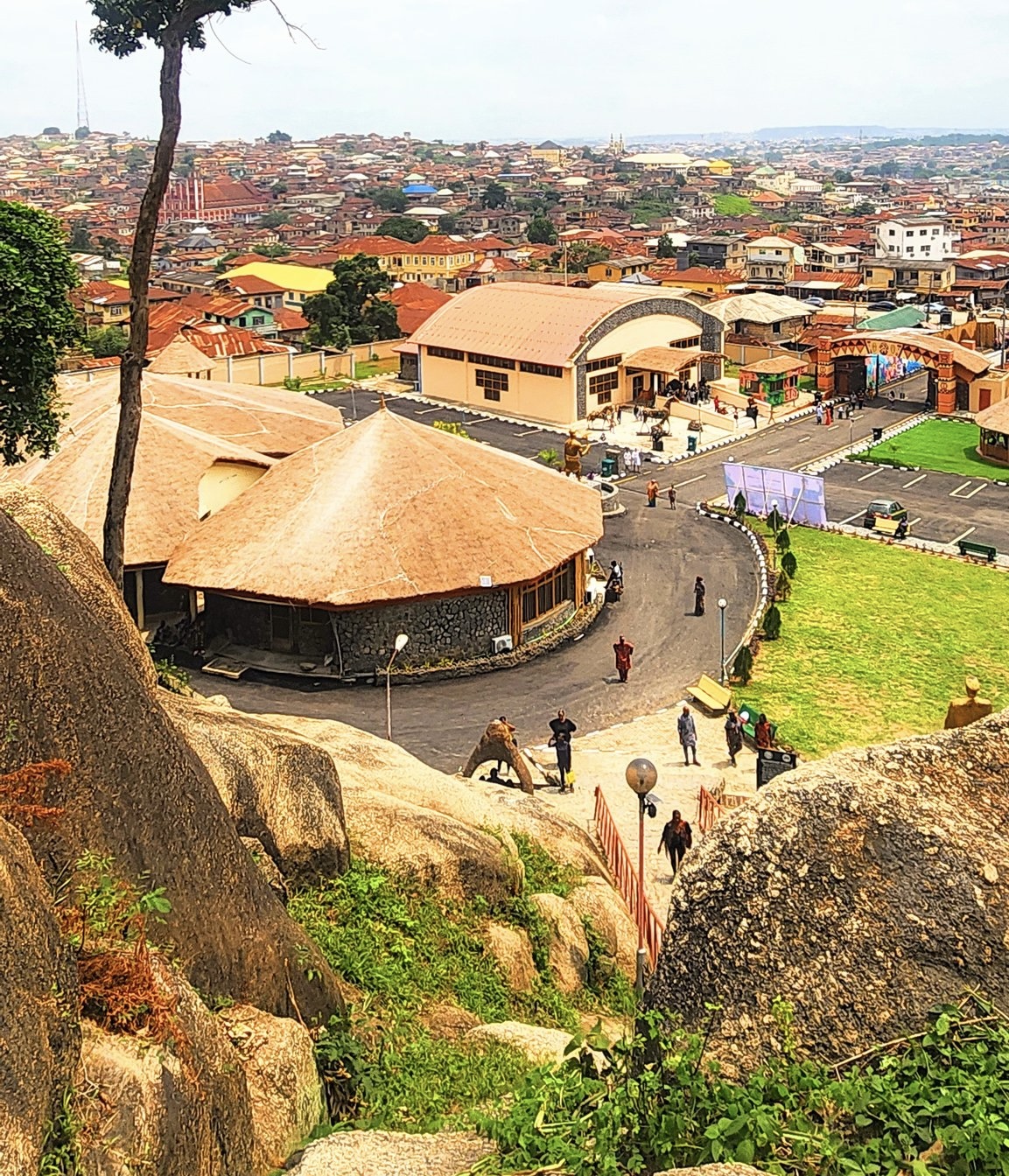Abeokuta is the capital city of Ogun State, located in the southwestern part of Nigeria. It is situated on the east bank of the Ogun River, near rocky outcrops in a wooded savanna—77 km (48 mi) north of Lagos by railway or 130 km (81 mi) by water. As of 2006, Abeokuta and its surrounding area had a population of 449,088.
Geography and Economy
Abeokuta lies in a fertile wooded savanna, with grey granite outcrops and a landscape once enclosed by 18-mile-long mud walls. Key agricultural products and trade goods include:
- Palm oil
- Natural rubber
- Lumber
- Cassava, rice, maize, and yams
- Cotton, fruits, kola nuts, and shea butter
- Indigo dye, rice, and cotton introduced by missionaries in the 1850s
The city sits below Olumo Rock, a site of caves and shrines with historical significance. Water supply is sourced from the Oyan River Dam, though not always reliable. The dam, located about 20 km northwest of Abeokuta, spans the Oyan River, a tributary of the Ogun River.
Abeokuta also hosts the Ogun-Oshun River Basin Development Authority, which oversees regional irrigation, electrification, and food-processing projects.
Local industries: - Fruit canning - Plastics - Breweries - Sawmills - Aluminium products - Aro granite quarries (south of the city)
Transportation
- Rail: Abeokuta was linked to Lagos by rail in 1899 (77 km). Since 2021, the Lagos-Ibadan standard gauge railway line includes a modern station at Abeokuta (online booking only).
- Road: The city is connected by road to Lagos, Ibadan, Ilaro, Shagamu, Iseyin, Sango Ota, and Ketou.
- Flyover: Constructed in 2013 to ease traffic flow.
History
Origins and Migration
- Founded around 1830 by the Egba people as a refuge from the collapse of the Oyo Empire and the threats of Dahomey slave raids.
- Earlier, the Egba had established Orile Egba in the 13th century, destroyed in the 19th century Yoruba Civil Wars.
Owu Narrative
- Post-Oyo collapse in 1817 led to the war against Owu (c.1822).
- Displaced groups settled in Ibadan, later leading to internal conflict.
- The Egba, led by Sodeke, withdrew to Olumo Rock, founding Abeokuta.
19th Century Developments
- Became a central refuge during the Yoruba Revolutionary Wars.
- Functioned as a federation of communities rather than a unified town.
- Successfully repelled Dahomey incursions in 1851 and 1864.
- In 1867, missionaries and British traders were expelled due to rising tensions.
Colonial Era
- The Egba United Government was formed in 1893 via a treaty with the British.
- Incorporated into British Nigeria in 1914.
- The Adubi War (1918) was an anti-tax uprising under indirect British rule.
- The Abeokuta Women's Revolt (1940s) protested colonial taxation policies.
Modern Period
- Became Ogun State capital in 1976.
Tourism
Key Attractions
- Olumo Rock: A spiritual and historical symbol with panoramic views.
- Olusegun Obasanjo Presidential Library (OOPL): A museum documenting the life and legacy of Nigeria’s former president.
Climate
(Details not provided in the source. Can be added on request.)
Notable Buildings and Institutions
- Old city wall remnants (18 miles in original length)
- Ake Palace: Traditional home of the Alake of Egbaland
- Centenary Hall (1930)
- Federal University of Agriculture, Abeokuta (FUNAAB) – Founded from a 1984 University of Lagos campus
- Federal College of Education, Osiele
- Green Legacy Resort
- Governor’s Office, Oke-Mosan
Notable People from Abeokuta
(Will be updated on request .)
See Also
- Egba United Government
References & External Links
- Media related to Abeokuta at Wikimedia Commons
- "Abẹ́òkuta's Living History"
